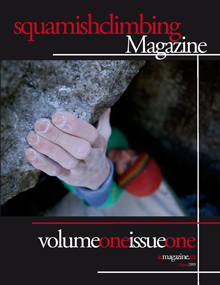For the most part, climbers everywhere don’t take the time to inspect each bolt before climbing. Rather, we rely on the expertise of the person who once put up the route. As time passes, there has been an increased sensitivity towards bolt corrosion and it has become most important for climbers to inspect bolts and hardware on any given route.

Bolt corrosion from Sicily. Photo credit: Unknown.
A PDF by the INTERNATIONAL CLIMBING AND MOUNTAINEERING FEDERATION was just released to discuss ‘Corrosion of climbing Anchors’. The PDF contains great information, including locations where ‘stress corrosion cracking’ is most likely to occur and what causes the corrosion. The PDF can be found by here.
For those interested, a great article was published by Climbing magazine on corrosion incidents in a number of different areas and rock types.
Two climbers headed up a two-pitch sport route on the Fire Wall, above Tonsai Beach on the Phra Nang Peninsula of Thailand. At the two-bolt anchor, the leader pulled up slack to belay his partner, and as an afterthought, he reached up to clip the first bolt of the next pitch as a redirect to belay his partner.
When the second reached the belay, both climbers leaned out on the anchor to inspect the next pitch. Immediately both anchor bolts broke. The pair swung off their stance and hung suspended, 90 feet off the ground, by the single second-pitch bolt the leader had clipped as a redirect. That bolt didn’t break.
A climber on the Upper Town Wall at Index, Washington, was tackling a seldom-climbed 5.12 route named Calling Wolfgang. After climbing through some gear-protected terrain, he continued past several bolts. Now about 65 feet up, he clipped the third bolt he encountered, intending to hang and clean some holds. As he leaned back on the bolt, however, it broke. He fell about 15 feet until his weight came onto the bolt below, which also broke. Fortunately, the next bolt held, arresting the climber’s fall only 15 feet off the ground.
What caused these accidents? When new, these anchors could hold thousands of pounds, but now they had failed under body weight. None of the failed bolts looked all that bad, at least at first glance, and one was almost new. The story behind these near-catastrophic bolt failures is more complicated—and more common—than you might expect.
For full article, please visit Climbing Magazine’s website here.












